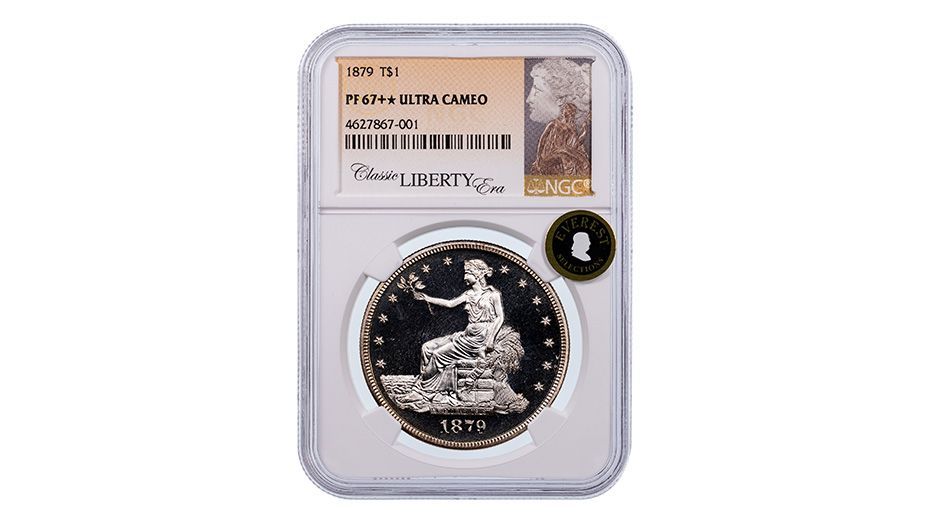1879 Trade Dollar NGC PF67+ Star UCAM
Rick Tomaska's Live Auction Featured Coin
Thursday, October 26th, 2023
Join our auction live at 5 PM PST / 8 PM EST
on Directv 222, Dish 85/224, and Spectrum Shop Zeal One
Our Private Advisory Coin Team has early access to our weekly auction coins. Pre-bidding is now open for this week's stunning selections. Call our Private Advisory Coin team at (800) 778-0624 to join our auction bidding. Your Personal Advisor can accept your confidential bid for this coin.
________________________________________________________________

- Mintage: 40 (16 to 20 known)
- NGC Population: 1/1
- PCGS Population: 0/0
- Finest Known: PF68 UCAM (1) – Last traded in 2011.
- PF68 Cameo & Deep Cameo specimens exist for the 1879 Trade Dollar with the last PF68 CAM example realizing over $100,000 in 2021 & the last PF68 UCAM selling for approximately $75,000 a decade prior.
- Across the entire series NGC & PCGS have certified just 14 Proof Trade Dollars in PF67 UCAM or finer!
- 1879 marks the first Proof only year in the series, as Business Strikes were discontinued following the 1878 issues.
- The Trade Dollar’s primary objective was to compete internationally with other foreign silver coinage such as the Spanish or Mexican silver dollars, of which were preferred in China.
- To surpass its rivals the trade dollars contained 90% silver and weighed slightly more than the Mexican dollar as it was 420 grains to the Mexican dollars 416 grains.
- Business strikes were produced between 1873-1878 primarily at the San Francisco & Carson City Mint due to proximity to local silver resources, as well as China. Proofs were struck through 1885.
- Unfortunately, the Trade Dollar was plagued by the Coinage Act of 1873, referred to by many as the “Crime of 1873,” as the law essentially demonetized silver and set the U.S. on the path to embracing the gold standard.
- While the Trade Dollar was considered a roaring success abroad, with international trading partners widely accepting America’s “commercial dollar,” troubles domestically began shortly after initial production.
- Whether intended or not, one of the sections in the Coinage Act of 1873 gave Trade Dollars legal tender status for all debts, up to five dollars. Here in lies the loophole that led to the demise of the Trade Dollar.
- As the value of silver continued to decrease in the United States, Trade Dollars found their way back to the U.S. where enterprising individuals would purchase the coins at their silver value and resell them at their face value.
- At the peak of this exploitation, those who were buying at intrinsic value and reselling at face value were making as much as a 20% profit per coin.
- By 1876, Congress revoked the legal tender status of the Trade Dollar, marking the only time they have done such with any U.S. coin. Its legal tender status would eventually be restored in 1965.
- The final nail in the coffin came in 1878, when the “free silver” cry of farmers and western miners since 1873, was finally heard by legislators with the passing of the Bland-Allison Act.
- This act returned the U.S. to bimetallism and mandated the U.S. Treasury purchase silver bullion at the market price in the amount of 2 to 4 million dollars monthly to be coined into silver dollars. Thus, the Morgan Dollar was born.






